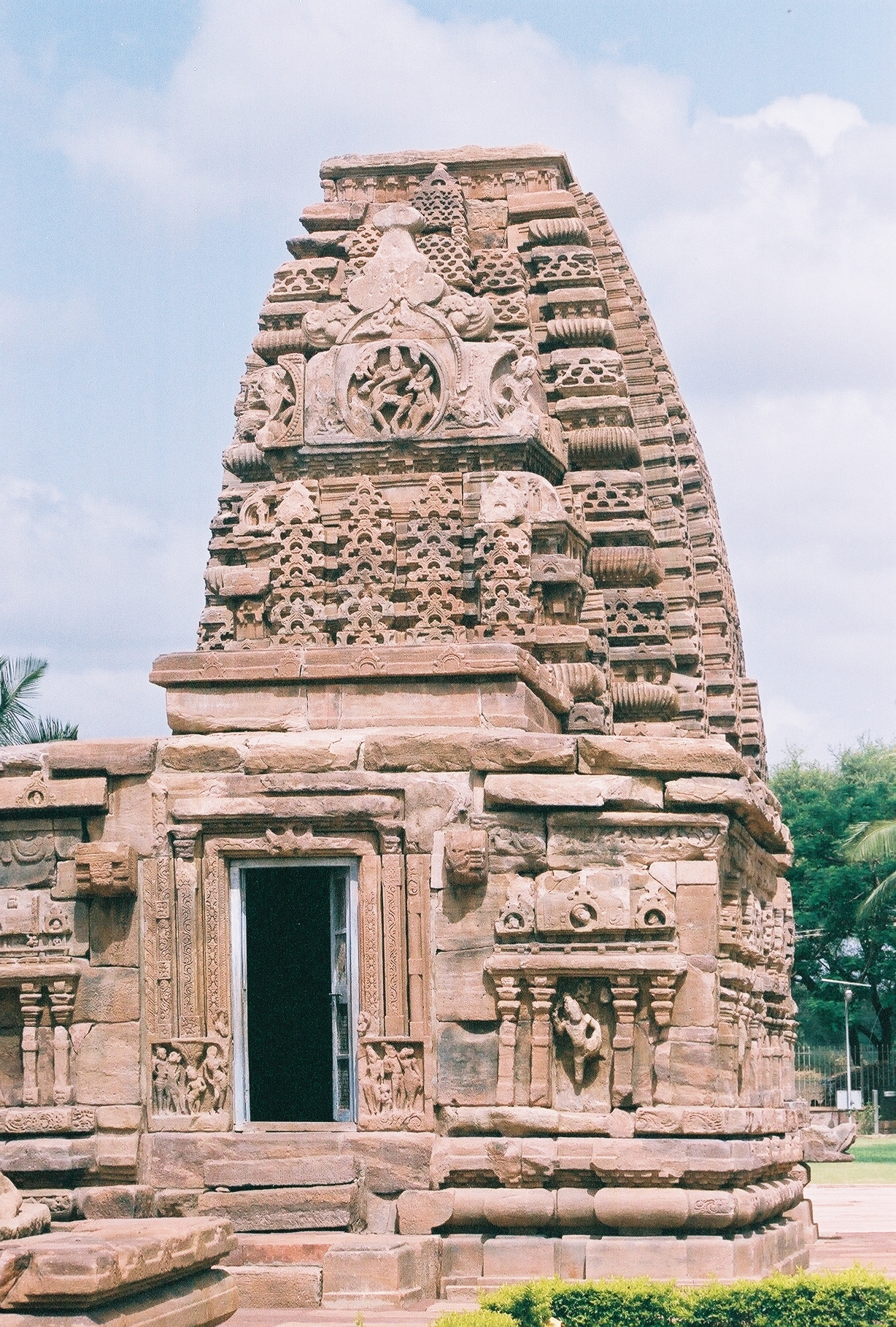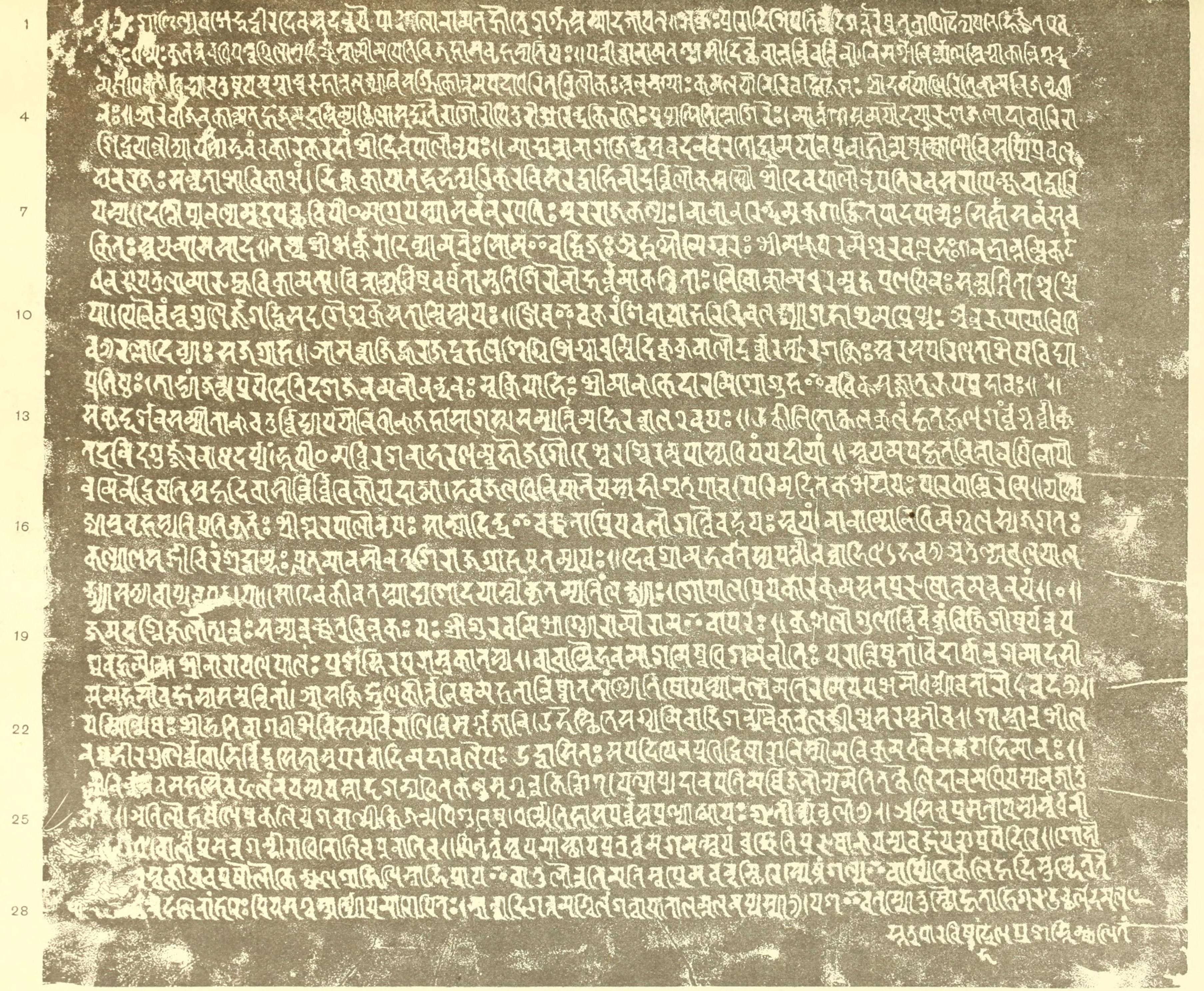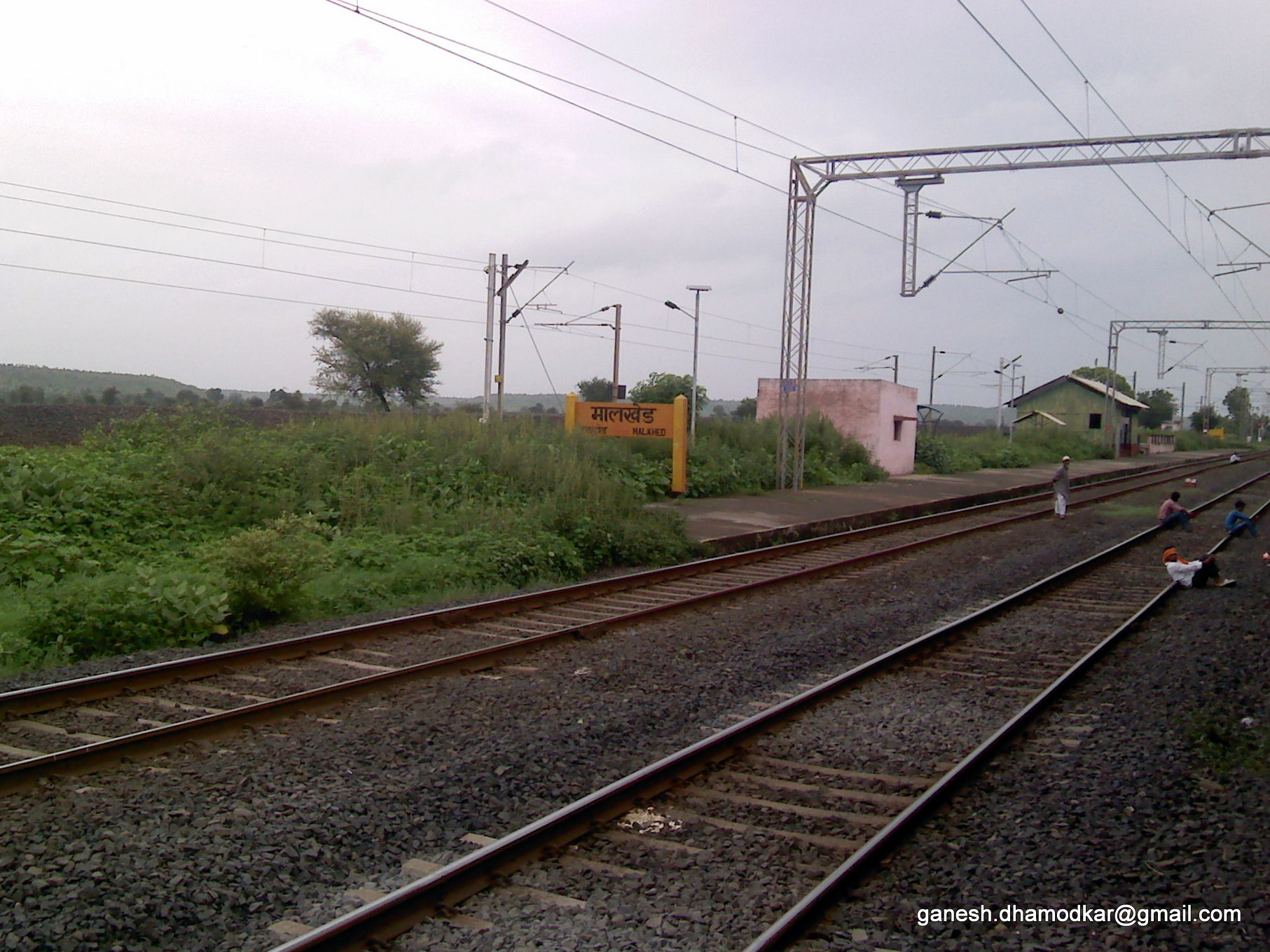|
Rashtrakuta
The Rashtrakuta Empire was a royal Indian polity ruling large parts of the Indian subcontinent between the 6th and 10th centuries. The earliest known Rashtrakuta inscription is a 7th-century copper plate grant detailing their rule from Manapur, a city in Central or West India. Other ruling Rashtrakuta clans from the same period mentioned in inscriptions were the kings of Achalapur and the rulers of Kannauj. Several controversies exist regarding the origin of these early Rashtrakutas, their native homeland and their language. The Elichpur clan was a feudatory of the Badami Chalukyas, and during the rule of Dantidurga, it overthrew Chalukya Kirtivarman II and went on to build an empire with the Gulbarga region in modern Karnataka as its base. This clan came to be known as the Rashtrakutas of Manyakheta, rising to power in South India in 753 AD. At the same time the Pala dynasty of Bengal and the Prathihara dynasty of Gurjaratra were gaining force in eastern and northwes ... [...More Info...] [...Related Items...] OR: [Wikipedia] [Google] [Baidu] |
Prathihara
The Pratihara dynasty, also called the Gurjara-Pratiharas, the Pratiharas of Kannauj or the Imperial Pratiharas, was a prominent medieval Indian dynasty which ruled over the Kingdom of Kannauj. It initially ruled the Gurjaradesa until its victory in the Tripartite Struggle in 816 which secured its right to the throne of Kannauj. Cadet branches of the dynasty ruled other minor states in the subcontinent. The Pratiharas were instrumental in containing Arab armies moving east of the Indus River. Nagabhata I defeated the Arab army under Junaid and Tamin in the Caliphate campaigns in India. Under Nagabhata II, the Pratiharas became the most powerful dynasty in northern India. He was succeeded by his son Ramabhadra, who ruled briefly before being succeeded by his son, Mihira Bhoja. Under Bhoja and his successor Mahendrapala I, the Pratihara dynasty reached its peak of prosperity and power. By the time of Mahendrapala, the extent of its territory rivalled that of the Gupta Empire stre ... [...More Info...] [...Related Items...] OR: [Wikipedia] [Google] [Baidu] |
Tripartite Struggle
The Tripartite Struggle (785–816) were a series of wars in northern India fought over the control of the throne of Kannauj, which during that time was equivalent to having imperial status over all of Aryavarta. It involved the three powerful dynasties of the era – the Pratiharas of Gurjaradesa, the Palas of Gauda (Bengal) and the Rashtrakutas of Manyakheta. The war ultimately resulted in Nagabhata II, King of the Gurjaras, winning the crown of Kannauj in 816, and proclaiming himself King of Kannauj. In the eighth century, the two major powers of Aryavarta (northern India) were the Pratiharas who ruled the Gurjara Kingdom and the Palas who ruled the Kingdom of Gauda (Bengal). While the Pratiharas gradually expanded their domain towards the east, the Palas expanded their domains towards the west. In southern India and the Deccan, the Rashtrakutas of Manyakheta reigned, who also sought to expand their domains north and control Aryavarta. This led to the formation of the ... [...More Info...] [...Related Items...] OR: [Wikipedia] [Google] [Baidu] |
Badami Chalukyas
The Chalukya dynasty () was a Classical Indian dynasty that ruled large parts of southern and central India between the 6th and the 12th centuries. During this period, they ruled as three related yet individual dynasties. The earliest dynasty, known as the "Badami Chalukyas", ruled from Vatapi (modern Badami) from the middle of the 6th century. The Badami Chalukyas began to assert their independence at the decline of the Kadamba kingdom of Banavasi and rapidly rose to prominence during the reign of Pulakeshin II. After the death of Pulakeshin II, the Eastern Chalukyas became an independent kingdom in the eastern Deccan. They ruled from Vengi until about the 11th century. In the western Deccan, the rise of the Rashtrakutas in the middle of the 8th century eclipsed the Chalukyas of Badami before being revived by their descendants, the Western Chalukyas, in the late 10th century. These Western Chalukyas ruled from Kalyani (modern Basavakalyan) until the end of ... [...More Info...] [...Related Items...] OR: [Wikipedia] [Google] [Baidu] |
Pala Empire
The Pāla Empire was the empire ruled by the Pala dynasty, ("protector" in Sanskrit) a medieval Indian dynasty which ruled the kingdom of Gauda Kingdom, Gauda. The empire was founded with the election of Gopala, Gopāla by the chiefs of Kingdom of Gauda, Gauda in late eighth century CE. The Pala stronghold was located in Bengal and eastern Bihar, which included the major cities of Gauḍa (city), Gauḍa, Bikrampur, Vikramapura, Pataliputra, Pāṭaliputra, Munger, Monghyr, Somapura, Ramavati (Varendra), Tamralipta, Tāmralipta and Jaggadala, Jagaddala. The Pālas were astute diplomats and military conquerors. Their army was noted for its vast war elephant corps. Their navy performed both mercantile and defensive roles in the Bay of Bengal. At its zenith under emperors Dharmapala (emperor), Dharmapala and Devapala (Pala dynasty), Devapala in the early ninth century, the Pala empire was the dominant power in the northern Indian subcontinent, with its territory stretching across ... [...More Info...] [...Related Items...] OR: [Wikipedia] [Google] [Baidu] |
Indra IV
Indra IV (died 20 March 982) was the last Rashtrakuta Emperor from 973 until his death. He was a nephew of the feudatory king of Western Ganga Dynasty of Talakad. After Tailapa II captured Manyakheta, the Ganga Maharaja Marasimha II crowned Indra III as emperor in Bankapura and worked hard to keep the dwindling Rashtrakuta Empire intact after the betrayal and invasion of Parmaras of Malwa but in vain. Marasimha II committed Sallekhana at Bankapura in 975 and Indra IV followed him in 982 at Shravanabelagola. Thus, the dynasty of Rashtrakutas vanished into history. However, several related families had come to power in various parts of India during the imperial expansion of the Manyakheta Empire. These kingdoms such as the Lattalura and Saundatti Savadatti is one of the oldest towns in Belagavi district in the Indian state of Karnataka. It is a celebrated Hindu pilgrimage centre located 78 kilometres from Belagavi and 41 kilometres from Dharwad. Savadatti is also ... [...More Info...] [...Related Items...] OR: [Wikipedia] [Google] [Baidu] |
Dantidurga
Dantidurga (reigned 753–756 CE), also known as Dantivarman II was the founder of the Rashtrakuta Empire of Manyakheta. Reu (1933), p54 His capital was based in Gulbarga region of Karnataka. His successor was his uncle Krishna I who extended his kingdom to all of Karnataka. The Ellora record of Dantidurga narrates that he defeated the Chalukyas in 753 and took the titles ''Rajadhiraja'' and ''Parameshvara''. The inscription calls him son of Indra II. The Samangad inscription (modern Kolhapur district, Maharashtra) states his mother was a Chalukyan princess from Gujarat called Bhavanaga. The same inscription states he defeated the infinite and invincible ''Karnataka-Bala'' (Karnataka army) of the Badami Chalukyas.Kamath (2001), p74He defeated the great Karnatik army of the Chalukyas, (Reu, 1933 p54) Further he defeated the kings of Lata (Gujarat), Malwa, Tanka, Kalinga and Sheshas (Nagas) in central India and performed many sacrifices.Reu (1933), p55 Though he conquered ... [...More Info...] [...Related Items...] OR: [Wikipedia] [Google] [Baidu] |
Kannauj
Kannauj (Hindustani language, Hindustani pronunciation: ) is an ancient city, administrative headquarters and a municipal board or Nagar palika, Nagar Palika Parishad in Kannauj district in the Indian States and territories of India, state of Uttar Pradesh. It is located 113 km (71 mi) from Etawah, 93 km (58 mi) from Kanpur, 129 km (81 mi) from Lucknow. The city's name is an evolved form of the classical name ''Kanyakubja''. During the ancient Vedic period, it was the capital city of the Pañcāla, Panchala Kingdom during the reign of king Vajrayudha. In the medieval era, it formed the core of the Kingdom of Kannauj and was ruled by multiple successive royal families. It was also known as ''Mahodaya'' during the time of Mihira Bhoja. It is situated 104 kilometres west of the state capital, Lucknow. Kannauj is famous for distilling of scents and perfumes. It is known as "India's perfume capital" and is famous for its traditional Kannauj Perfume, a g ... [...More Info...] [...Related Items...] OR: [Wikipedia] [Google] [Baidu] |
Manyakheta
Malkheda originally known as Manyakheta (IAST: Mānyakheṭa, Prakrit: "Mannakheḍa"), and also known as Malkhed,Village code= 311400 Malkhed (J), Gulbarga, Karnataka is a town in Karnataka, India. It is located on the banks of Kagina river in Sedam Taluk of Kalaburagi district, around 40 km from Kalaburagi. The city reached the peak of its prosperity during the 9th and 10th centuries, serving as the Imperial capital of the Rashtrakutas. At Manyakheta, there is a historical fort whose restoration is in progress based on a proposal submitted by HKADB (Hyderabad Karnataka Area Development Board). Demographics India census, Malkheda had a population of 11,180 with 5,679 males and 5,501 females and 2,180 households. History Manyakheta rose to prominence when the capital of Rashtrakutas was moved from Mayurkhandi in present-day Bidar district to Mānyakheṭa during the reign of Amoghavarsha I. He is said to have built the imperial capital city to "match that of Lor ... [...More Info...] [...Related Items...] OR: [Wikipedia] [Google] [Baidu] |
Kannada Language
Kannada () is a Dravidian languages, Dravidian language spoken predominantly in the state of Karnataka in southwestern India, and spoken by a minority of the population in all neighbouring states. It has 44 million native speakers, and is additionally a second or third language for 15 million speakers in Karnataka. It is the official and administrative language of Karnataka. It also has Languages with legal status in India, scheduled status in India and has been included among the country's Classical languages of India, designated classical languages.Kuiper (2011), p. 74R Zydenbos in Cushman S, Cavanagh C, Ramazani J, Rouzer P, ''The Princeton Encyclopedia of Poetry and Poetics: Fourth Edition'', p. 767, Princeton University Press, 2012, Kannada was the court language of a number of dynasties and empires of South India, Central India and the Deccan Plateau, namely the Kadamba dynasty, Western Ganga dynasty, Nolamba dynasty, Chalukya dynasty, Rashtrakutas, Western ... [...More Info...] [...Related Items...] OR: [Wikipedia] [Google] [Baidu] |
Kirtivarman II
Kirtivarman II also known as Rahappa (reigned 746 – 753 CE) was the last ruler in the Badami Chalukya dynasty. He succeeded his father Vikramaditya II. His reign was continuously troubled by the growing power of the Rashtrakutas and Pandyas and finally succumbed to them. Conflict with the Pandyas Kirtivarman and his Ganga feudatory Sripurusha came into conflict with the Pandya ruler Maravarman Rajasimha I who was extending the Pandya empire on to the Kongu country which was adjacent to the Ganga kingdom. Rajasimha crossed the Kaveri and engaged Kirtivarman and Sripurusha in a big battle at Venbai on the banks of the river Kaveri. The Chalukya king was defeated. Diminishing power Kirtivarman was steadily undermined by the activities of Rashtrakuta Dantidurga who was establishing the Rashtrakuta Empire. Dantidurga was a feudatory of the Chalukyas and was beginning to establish an independent kingdom around Ellora. Kirtivarman II was plagued by intense outside pressure: ... [...More Info...] [...Related Items...] OR: [Wikipedia] [Google] [Baidu] |
Karnataka
Karnataka ( ) is a States and union territories of India, state in the southwestern region of India. It was Unification of Karnataka, formed as Mysore State on 1 November 1956, with the passage of the States Reorganisation Act, 1956, States Reorganisation Act, and renamed ''Karnataka'' in 1973. The state is bordered by the Lakshadweep Sea to the west, Goa to the northwest, Maharashtra to the north, Telangana to the northeast, Andhra Pradesh to the east, Tamil Nadu to the southeast, and Kerala to the southwest. With 61,130,704 inhabitants at the 2011 census, Karnataka is the List of states and union territories of India by population, eighth-largest state by population, comprising 31 List of districts in India, districts. With 15,257,000 residents, the state capital Bengaluru is the largest city of Karnataka. The economy of Karnataka is among the most productive in the country with a gross state domestic product (GSDP) of and a per capita GSDP of for the financial year 2023– ... [...More Info...] [...Related Items...] OR: [Wikipedia] [Google] [Baidu] |






